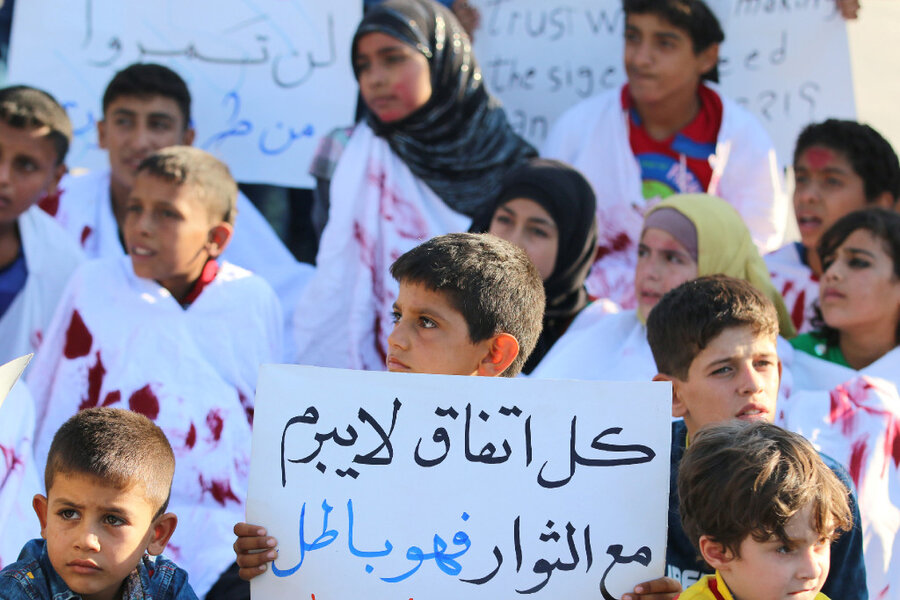Syrian truce’s first goal: aiding civilians
Loading...
Few nations have split apart as quickly and violently as Syria. Since its war began in 2011, a quarter of its people have fled abroad. Another quarter are internally displaced. Of those, 600,000 barely survive under an aerial siege by a brutal regime. At least a dozen fighting forces are involved. Why on earth would most of these players now accept a truce?
Starting Monday, in fact, a truce, brokered by Russia and the United States, has been largely honored. Its initial aim is very simple, and the most compelling of the reasons for a lull in the violence: to allow truckloads of aid to the starving and injured civilians, especially in Syria’s former commercial hub, Aleppo.
Many other motives have helped drive the 10 months of diplomacy that led to the truce. Russia wants to show it has influence in the Middle East. The US seeks to isolate and eliminate Islamic State and an Al Qaeda affiliate. Turkey wants to stop gains by a Kurdish group. Syrian rebels fighting for democracy hope for talks that would end the Assad regime. And so on.
But aiding innocent civilians comes first. Dozens of aid groups as well as the United Nations are ready to provide relief to an estimated 6 million people inside Syria. In Aleppo, especially, some 250,000 people are in desperate need of water, food, and medical supplies.
Humanitarian motives often cut through justifications for violence. They are woven into international law and embedded in the charters of groups such as the Red Cross. Aiding Syria’s civilians is also a stepping stone toward a permanent ceasefire and possible talks in Geneva next month for a political settlement.
More than 300,000 people have been killed in Syria, a toll that cannot but weigh on the minds of most of the parties involved. A weariness with war and a compassion for the displaced civilians must eventually bring peace. US Secretary of State John Kerry says fighting will only escalate if it does not stop now. And, he says, a truce is “a last chance to be able to hold Syria together.”
Care for civilians may be all that remains of a consensus among Syria’s competing forces. If the truce holds and aid flows, Syria can rebuild itself. The rest of the world must show it cares, too, in order to salvage this pivotal Middle East country.







